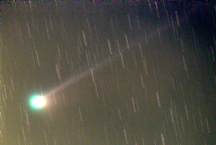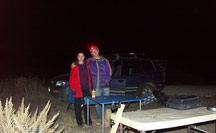10x5min stack using the ST2000XCM and Megrez f/6 refractor. sRGB+gamma/ single-shot color processed in CCDOPS 5. The upper right suffered from chip condensation for the first few frames. Aligned and stacked on the comet nucleus in Registax3. Then Photoshop CS2 used for levels, cropping, "smart sharpening", and pump up the color saturation slightly
The DumbBell Nebula (M27) in Vulpecula. 4x5min stack using the ST2000XCM and Megrez refractor, sRGB+gamma/single-shot color processing in CCDOPS5, stacked in Registax3. Levels, "smart sharpened", unsharp mask, despeckled, and severely cropped in Photoshop CS2.




